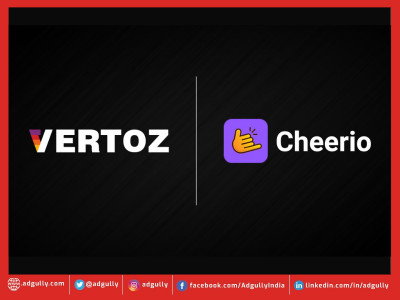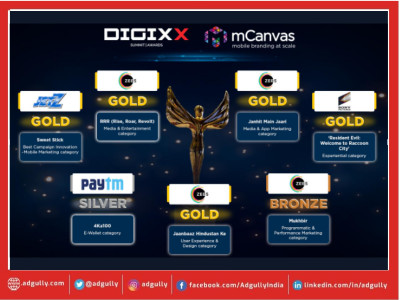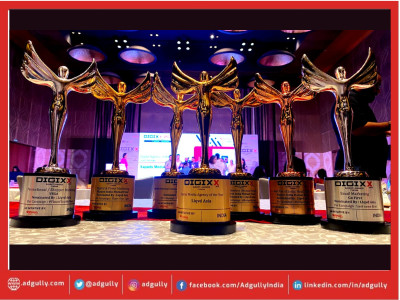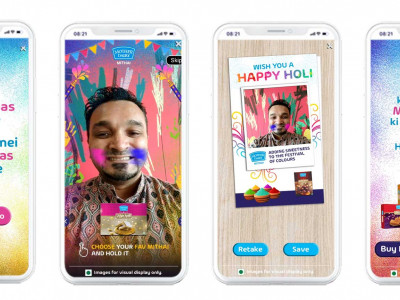Top of funnel approach to marketing & optimisation might return, say experts
According to industry reports, the global Marketing Analytics market is expected to see wide-ranging growth over the next few years at a CAGR of 13.17 per cent between 2018 and 2023, to reach a value of $4.4 million by 2023.
While Marketing Analytics has been used to gauge the impact of marketing activities, maximise ROI and identifying the areas of improvement through various measurement tools and analysis of data and metrics, the pandemic has made this field even more significant as there is a need for brands and marketers to have sharper focus and increase efficiencies.
Also read: #TwitterChat: Rebranding till you get it right
With growing shift to digital, the various channels used by marketers, such as Online Marketing, E-mail Marketing, Content Marketing, and Social-Media Marketing also fall under the ambit of Marketing Analytics today. Hence, it has become imperative to understand how consumers interact with such channels and whether they are giving the expected efficiencies in the marketing strategy.
Adgully’s flagship #TwitterChat property, in its latest edition, turned the spotlight on ‘Leveraging Marketing Analytics – Driving efficiencies in challenging times’. Measuring marketing effectiveness is a highly specialised field. Yet, do marketers really have a grasp of the latest developments in this field? Identifying the different Attribution Models for marketers; Making the most of Marketing Analytics tools; What are the metrics required; and much more will be discussed by our elite panel. Joining in the discussion were:
Tanushree Radhakrishnan, COO, LIQVD Asia (@tanushree_rk) - Moderator
Vishal Rupani, CEO, mCanvas (@vishalrupani)
Hiren Shah, Founder & Chairman, Vertoz (@hirenhshah)
Benedict Hayes, Executive Director & Joint MD, Ethinos Digital Marketing (@benboombastic)
Sunny Nagpal, Co-founder & Managing Director APAC, Httpool (@TheSunnyNagpal)
Anubhav Sharma, Founder & CEO, SYNCMEDIA (@AnubhavSharma)
Radhakrishnan commenced the session by asking the panellists to share their views on marketing spends and how they have been impacted by the COVID-19 pandemic.
So here's the first question, a quick check to gauge how we are doing. #TwitterChat @adgully @vishalrupani @hirenhshah @benboombastic @TheSunnyNagpal @AnubhavSharma pic.twitter.com/AGVAELXEfi
— Tanushree Radhakrishnan (@tanushree_rk) July 24, 2020
Rupani observed, “Brands have taken the ‘wait and watch’ approach during the lockdown and there has been a shift in marketing spends, from traditional to digital, and within digital, to mobile ads, which is now the new normal.” According to him, “BFSI, Consumer Durables and FMCG brands are increasingly using mobile to create digital experiences for users.”
Diving into the details, Nagpal gave his POV and said, “I would not call it a drop, but rather a curtailing of spends or a rationalisation of spends. COVID-19 has impacted entire supply chains all the way down to raw material procurement to end of the line distribution. As supply chains shift to COVID-19 protection oriented systems, brands are also shifting to empathy-oriented messaging. Becoming a part of the community, shifting production lines to support production of sanitizers, masks, PPE, etc., FMCG brands are building positive connect. It is common knowledge that local kiranas have stood out amongst the chaos of COVID-19, but reversing the end consumer supply chain – to sourcing, stocking and delivering goods.”
He further said, “Financial organisations already at the fore-front of digital use have been impacted because their offline teams are unable to complete last mile processes. As we rebound from COVID-19, in time marketing spends will also rebound. But there will be more definitive asks and objective setting. And Digital is here to stay. Partnerships with third-party delivery mechanisms, safety protocols for their staff and support teams and activation of online marketplaces are also enabling brands retain mind-share with their users. It is no more about SOV (Share of Voice), but about positive sentiment and empathy.”
Hayes added here, “There have been different reactions from different verticals on overall spend. For example, travel has seen a drop, but there has been huge growth in insurance, health tech, gaming, EdTech. But there’s definitely a shift to digital across verticals. We have seen traditional brick-and-mortar businesses now pivot to digital and increase spends as lockdowns across the country affecting their businesses.”
Agreeing with Hayes, Rohit Matlapudi, Business Head - International & Strategy, Ethinos Digital Marketing, joined the discussions and tweeted, “We have rolled out POCs at a hyperlocal level based on where lockdowns are being implemented and have seen great success.”
Sharma then gave his perspective from SYNC Media’s lens and said, “At SYNC, we measure the impact of TV advertising on brand’s core business KPIs that requires us to track advertising on 700+ TV channels in the country. On TV, we saw a clear decline both in terms of volumes and value of advertising during the lockdown phases.”
Giving some stats, he tweeted, “At TV genres level, ad volumes data when compared to March’20, the month of April registered a decline as following:
News: -2%
Movies: -26%
GEC: -23%
He further added, “If we compare the sheer volumes, the overall ad volume on TV declined by ~19 per cent in March’20 compared to February’20, then it again registered a negative growth of ~19 per cent for April’20 over March’20. However, starting May’20, we noticed a slight rise in overall ad volumes at about 6 per cent when compared to the ad volume in April’20 and June’20 registering a growth of ~23 per cent over April’20 volumes. If we look at the trends closely, one of the key takeaways is clearly the acceleration towards digital. More brands are now focused and working on increasing their digital footprint. But that might not really have increased the spends on digital immediately.”
“For us, the spending hasn’t dropped, instead, we’re acquiring a new customer base as more businesses are digitising their operations,” Shah said, adding, “If I were to point specific categories – the education industry has seen a drastic shift as online is given a boost. Other than that, the banking sector has accelerated digitisation to offer flexibility in terms of payment, loans, etc., to their customers. There are grocery stores that have turned digital to not miss out on their consumer base.”
Radhakrishnan then asked the panelists to share about the trends that they foresee and the learning from the lockdown.
Whats your take on this?#TwitterChat @vishalrupani @hirenhshah @benboombastic @TheSunnyNagpal @AnubhavSharma @adgully pic.twitter.com/ycrJ9e8EvN
— Tanushree Radhakrishnan (@tanushree_rk) July 24, 2020
Hayes noted that consumer behaviour has completely changed and now they value safety and convenience more. He added, “Basket sizes have increased as people shop less frequently and more users are now looking for products online. Even for categories like food & grocery that were traditionally offline-heavy, we are seeing a big growth in users finding products online, and this will be the new normal.”
“Advertisers with increased digital footprint will now have a lot more near real-time data available to them, pushing traditional TV measurement lag to be appropriated for the purpose,” said Sharma. “Even traditional marketers will have the data that is always available due to increased digital footprint and marrying it to the spends on, say TV, that is not per se measured and held accountable on its impact on core business KPIs will be at the centrestage,” he added.
Sharma further said, “Marketing analytics will become ever more centric to the MMM. With changes in how attribution and optimisation on digital relies on cookies and other such fixed identifiers, the top of funnel approach to marketing and optimisation may begin to return.”
Nagpal here said that the lockdowns have taught everyone that we have to be ready for quick changes and adapt accordingly. Lockdown restrictions have forced consumers to adopt contactless behaviour. Marketers should make adaptable and agile plans by being active all the time, pivoting to where their clients and prospects are moving by investing in personalised and memorable brand experiences in these crucial times. He added, “Brands need to be present and success will be defined by those brands that will be able to build long-term relationship with consumers by just being present for them in these tough times.”
Describing the changes in the market, Shah said, “The future certainly looks different from what we had foreseen in the pre-pandemic world. Now, brands will have to go back to basics – serving consumers in its truest sense. It wouldn’t make sense to be ‘salesy’ at the moment, because more consumers are looking for security and trust, not products. So, it is important to not run away from your consumers during this tough time. Instead, reach out to them to show that you care. Brands that will be able to do so will succeed in a longer run. In times like these, it is important to engage, extend comfort and flexibility to consumers, not move away from their sights.”
Rupani concluded by pointing out a few trends and said, “Direct-to-consumer is a big trend right now, and this mostly pertains to giants like HUL and ITC, that reported a growth in sales over the last few months. Here’s why – customers are cautious about walking into stores to buy stuff, and so the next best option is to buy them through online stores. Brands are taking advantage of this and pitching their promotions directly to consumers. By creating interactive, high-impact ads for users, we’ve seen that users are now actively engaging with ads. Users are walking, jumping, swiping and tapping to interact with ads. With such interactions, users are more interested in the product or service and spend more time on the ad to learn about it, which we consider as success.”
Catch the complete conversation on Adgully’s Twitter page. Follow @adgully and tune in to such #TwitterChats every Friday from 3 pm to 4 pm.


















Share
Facebook
YouTube
Tweet
Twitter
LinkedIn